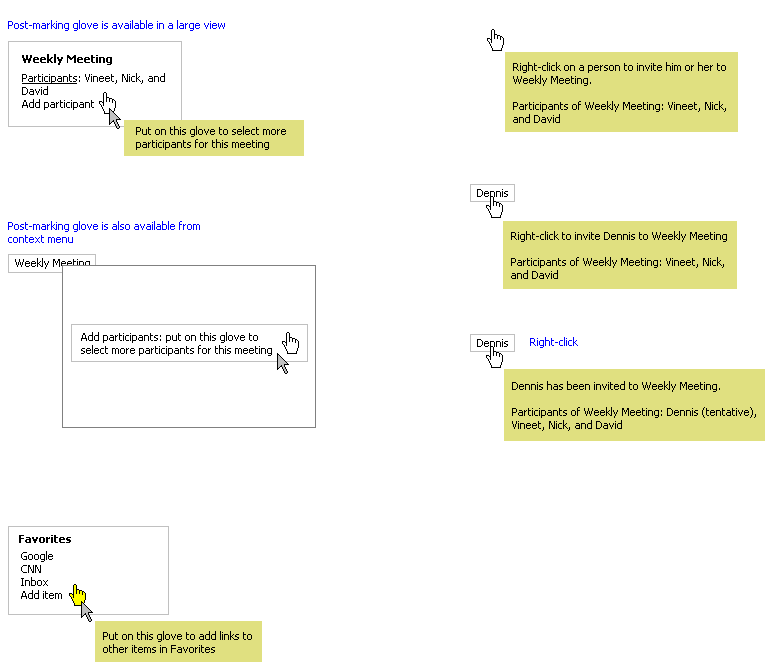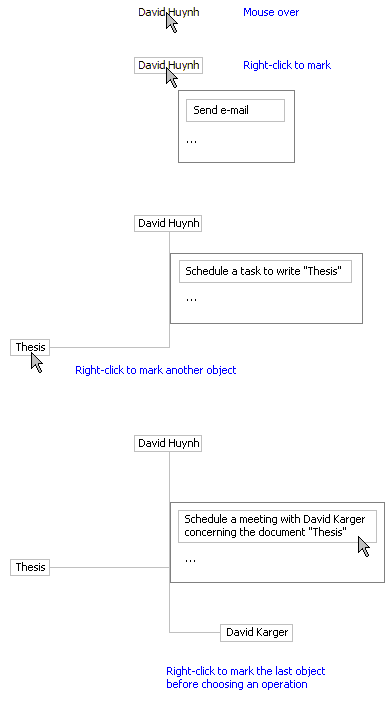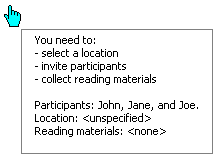
David Huynh
April 9, 2003
I'm primarily concerned that the user will not use drag and drop except for moving. I'm proposing 3 different alternatives below.
We can make the user aware that the drag and drop mechanism can be used to obtain effects other than moving by explicitly listing possible drop effects (see figure below).

I assume that the user will attempt d&d at some point in time, and then hopefully discover that it is not only for moving.
The link from the dragged object to the mouse pointer or drop target is drawn to suggest the establishment of a relationship rather than just a relocation of the dragged object. Note that we don't indicate that the dragged object is lifted off its original location.
By pre-marking I mean selecting one or more objects and then invoking one of several operations that the system proposes for the selection. In the figure below,

Post-marking is essentially the tool paradigm used in most drawing programs. The user selects a tool (e.g. fill, smudge, lighten), the mouse pointer changes, and then the tool can be applied on some objects.
In the figure below, the user can choose a tool by "putting on a glove". So, you can put on the "Add participant" glove from a large view of a meeting or from the meeting's context menu. The mouse pointer changes to that glove and you can right-click on things to apply the tool on them. Hit ESC to take off the glove.

Pre-marking and post-marking are probably easier than d&d on persons dexterically challenged.
We can support all of the 3 mechanisms together or in some combination. I can imagine cases where one makes more sense than the others. For instance, when you need to collect several things into the same collection, d&d is awkward because you need to run your mouse pointer back and forth; post-marking is the best because you're free to browse around and then point at just the items you want to collect. Pre-marking is good when you want to narrow down the list of operations that can be done by selecting several objects.
D&d can only establish binary relationships while pre-marking and post-marking can establish any n-ary relationship. For instance, the following figure illustrates how using the same glove you can invite participants, select a location, and collect reading materials for a meeting.

In addition, pre-marking and post-marking don't require all objects to be onscreen at the same time as does d&d. Note that marking is global in that an object doesn't have to be shown to be marked. We can actually model marking as a predefined collection.
The idea of those magic gloves might even scale for multiple input devices. Imagine you can assign a different tool to a different mouse or pen. You can even dedicate one favorite pen to mark things as interesting. If you often need to mark your students' work, dedicate a pen to make marking annotations.